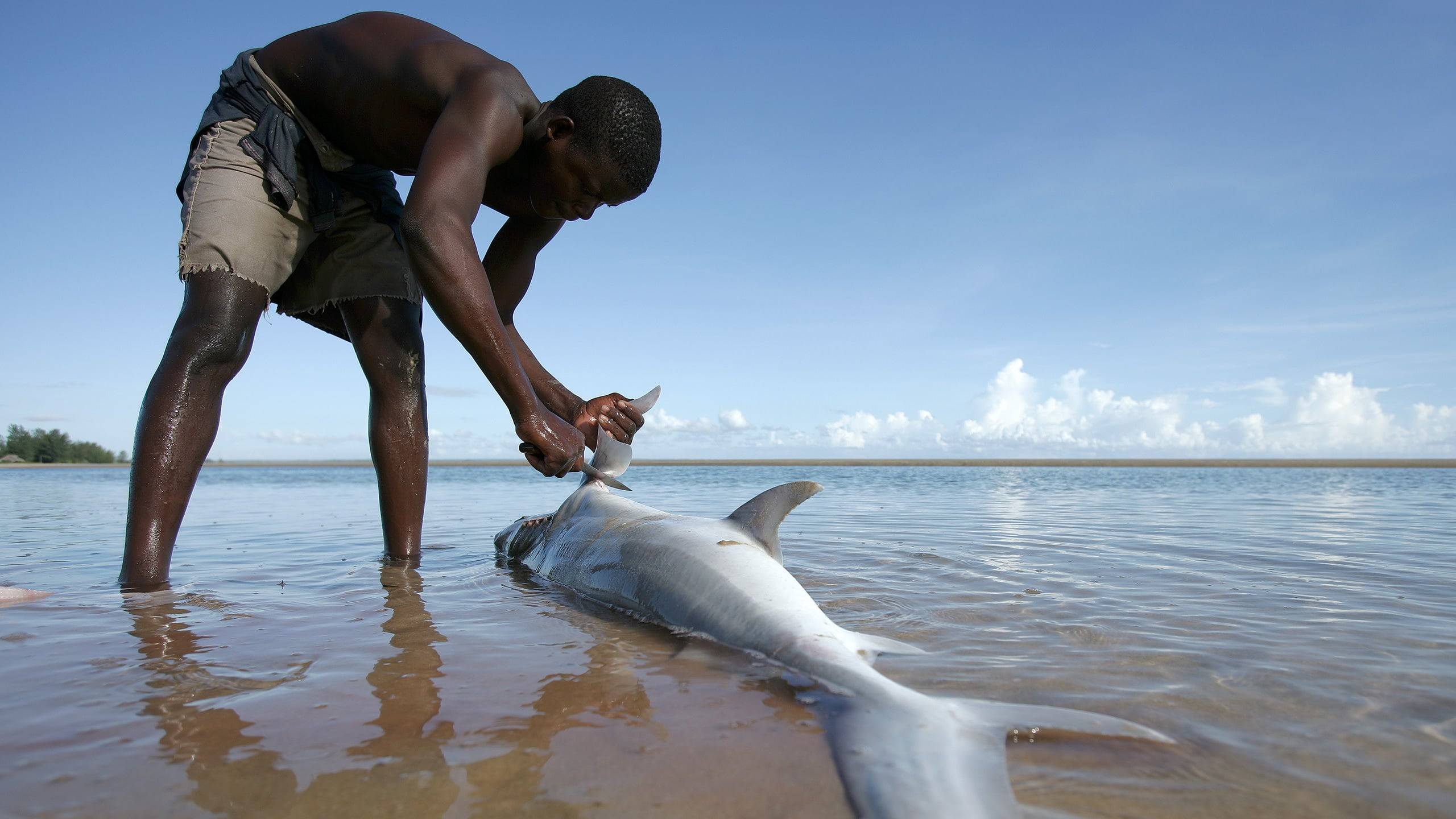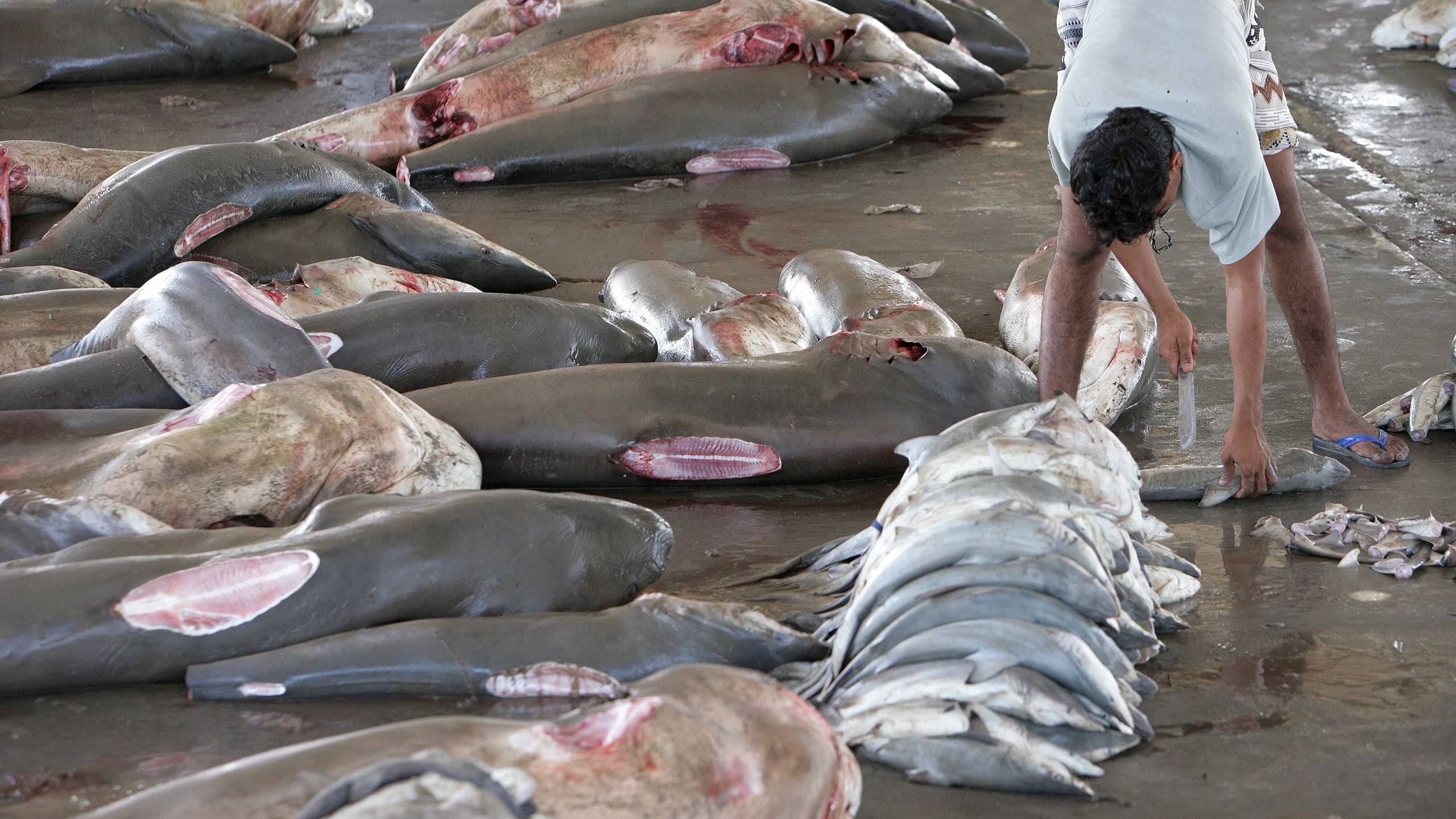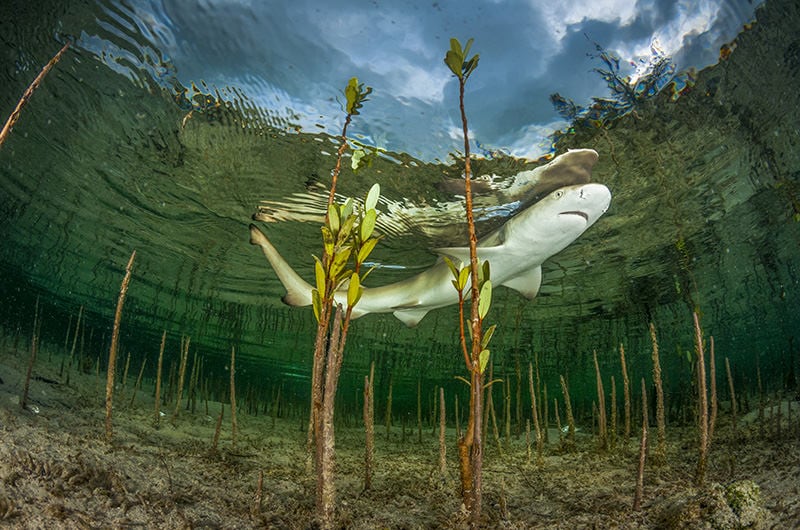Mangroves: Shark nurseries disappear
Mangrove forests form the border between sea and land in tropical and subtropical regions. They are unique as a forest because 60 of the approximately 70 species described grow in brackish water. Their extensive root systems and their shoots form a fine net that protects the coasts from erosion from tides and storms. The net of roots also serves as a nursery for many species of fish and sharks. In the fine root net, small young animals are well protected from larger predators.
Mangrove areas are disappearing worldwide. In the last 50 years 50% (1-2% annually) of the worldwide mangrove stocks have disappeared, alone 35% in the last 20 years (sources: NASA Mangrove Project, Nature.com). At least 11 of the approx. 70 mangrove species are already endangered (source: Red List of the IUCN).
Reasons for the decline:
- Clearing for human settlements, fish and shrimp farms, wood
- Environmental degradation such as environmental toxins, oil from ships and oil spills, sediment deposition
- Global warming and rising sea levels and more extreme weather conditions
- Higher water salinity in coastal areas by diverting fresh water from rivers for agriculture








